Key Highlights
- ITIL 4 Release Management add practical applications like automation and CI/CD. In this article you'll learn more about:
- Adopting SVS: Why implementing the Service Value System.
- Four Dimensions: Incorporate Organizations & People, Information & Technology, Partners & Suppliers, and Value Streams & Processes in your strategy.
- Achieving Benefits: How to speed up time-to-market and enhance stakeholder satisfaction.
When I was working at Nestlé, I found ITIL 3 to be overly theoretical and not very applicable to my daily work, especially in release and test environment management. ITIL 3's high-level guidelines often left gaps, making it challenging to implement effective release processes. You might have experienced similar frustrations if you've worked with ITIL V3, struggling to translate its concepts into actionable steps for your team.
The transition to ITIL 4 brought significant improvements, offering more practical and adaptable practices. With ITIL 4, you'll find a stronger emphasis on automation, CI/CD, and practical risk management strategies that align better with modern software development methodologies. These enhancements can help you improve your release management processes and achieve more reliable deployments.
However, it wasn't until I started working at Apwide that I truly understood the full value of ITIL. At Apwide, I saw firsthand how ITIL's common terminology and standardized processes can facilitate better communication and efficiency across different industries. Adopting ITIL, you will benefit from a shared language and framework that enhances collaboration and consistency in your IT service management practices.
Throughout this article, I will share actionable insights around the ITIL 4 Release Management practice that can be implemented within your organization.
Understanding ITIL 4
First and foremost, ITIL 4 (Information Technology Infrastructure Library - version 4) represents a comprehensive framework designed to manage IT services effectively. It introduces a holistic approach to service management, emphasizing value creation through practices such as continuous integration, delivery, and deployment.

The 4 Dimensions Model in ITIL 4
The Four Dimensions Model
For effective service delivery, ITIL 4 emphasizes the importance of understanding roles, capabilities, and organizational culture. Also important is the need to manage data, information, and technology infrastructure to support and improve service operations. Additionally, fostering productive relationships with external partners, suppliers, and service providers will optimize your service capabilities. Finally, improving workflows and processes is essential to create and deliver value to your customers.
Combining all of those elements, ITIL 4 is structured around the Service Value System (SVS) and the four dimensions of service management:
- Organizations and People
- Information and Technology
- Partners and Suppliers
- Value Streams and Processes
ITIL 4 focuses on these dimensions to make IT service management holistic, integrated, and aligned with modern business and customer needs. This leads to more efficiency, reliability, and value creation.
Challenges in Traditional Approaches
Before adopting ITIL 4, many organizations faced significant hurdles in release management. Chaotic deployment schedules, lack of standardized processes, and manual interventions often led to errors, delays, and increased operational costs. The need for a structured, integrated approach to release management became increasingly evident as organizations aimed to improve service delivery and customer satisfaction.
What is the difference between ITIL 4 Release Management and the Traditional Approach?
The difference between standard release management and ITIL 4 release management lies primarily in structure, integration, and intent.
Standard release management often evolves organically within teams or organizations. It's usually shaped by internal practices, specific tools, or project preferences. In many cases, it’s informal, decentralized, and not fully documented. The processes might work well for small teams or isolated environments, but they can become inconsistent and harder to scale. Teams may not clearly differentiate between types of releases, and responsibilities are often shared or undefined. While this model offers flexibility, it tends to lack visibility and control especially as complexity grows.
In contrast, ITIL 4 release management follows a structured, service-oriented framework designed for consistency and alignment with broader business goals. It defines clear roles and integrates closely with related ITIL practices like Change Enablement, Service Validation, and Deployment Management. Release activities are documented and categorized whether they're major updates, minor improvements, or urgent fixes so that risk and impact can be assessed accordingly. ITIL 4 also adapts to Agile and DevOps environments, balancing flexibility with governance and traceability. This makes it especially valuable for teams managing frequent deployments across multiple environments or stakeholders.
In essence, where standard release management is often tool-driven and reactive, ITIL 4 offers a cohesive, scalable, and proactive approach that brings order to growing or complex delivery pipelines.
Adopting ITIL 4 Release Management
The ITIL 4 Release Management practice is designed to orchestrate the build, test, and deployment of releases with precision. This approach not only improves release processes but also enhances collaboration and communication across teams and stakeholders.
Here’s how you can implement ITIL 4 Release Management effectively in your organization:
How ITIL 4 Supports Continuous Improvement in Release Management
ITIL 4 enhances continuous improvement in release management while integrating it into a broader value creation framework and emphasizing iterative enhancements. Here’s how:
1. Holistic Value Creation
ITIL 4 views release as part of a larger value stream, encouraging you to understand how each release contributes to overall value delivery. This perspective helps identify improvement opportunities within the entire release cycle.
2. Service Value System (SVS)
The SVS framework integrates various components like governance, the service value chain, and continual improvement. Release management interacts with these components, promoting an interconnected approach to refining the release management process and enhancing value delivery.
3. Guiding Principles
ITIL 4’s guiding principles, such as “Start Where You Are” and “Progress Iteratively with Feedback,” support iterative improvements. They encourage assessing the current release process, making incremental changes, and using feedback to enhance release management practices.
4. Continuous Improvement Model
The Continuous Improvement model in ITIL 4 offers a structured approach to ongoing enhancements. It involves defining goals, assessing current performance, analyzing gaps, and implementing actions. This model helps improve release management by identifying and addressing inefficiencies in each release cycle.
5. Integration with Other Practices
Release management is integrated with other ITIL practices like Change Control, Incident Management, and Problem Management. This integration fosters collaboration and helps refine the release management process based on insights and feedback from these related areas.
In ITIL 4, Change Management ensures that changes to IT services are systematically assessed and implemented with minimal risk, while Release Management focuses on the efficient planning, deployment, and delivery of these changes to the live environment, both processes ITIL Change and Release Management, working together to optimize service value and minimize disruptions.
6. Service Value Chain
The Service Value Chain includes activities like Plan, Improve, Engage, Design & Transition, Obtain/Build, and Deliver & Support. Release management falls under Design & Transition, emphasizing the need for effective planning and execution to ensure successful transitions and quality releases.
7. Metrics and Measurements
ITIL 4 advocates using metrics and KPIs to drive improvements. Tracking performance and analyzing data, helps identify bottlenecks and measure the impact of changes, making informed decisions for refining release management.
In essence, ITIL 4 supports continuous improvement in release management by providing a comprehensive framework, promoting iterative enhancements, and integrating with other practices to optimize processes and deliver greater value.

ITIL 4 Management Practices
Release Planning and Scheduling in ITIL
Release planning and scheduling keep deployments structured, predictable, and aligned with business needs. Without a clear plan, last-minute conflicts and deployment failures are inevitable. ITIL provides a framework for organizing releases efficiently, reducing risk, and improving coordination.
A release plan defines what to release, when, and how. It includes timelines, dependencies, and approvals, ensuring that teams work with clear expectations. Scheduling integrates with change management to prevent conflicts and maintain service stability.
A release checklist helps keep the process organized and reduces risks. It ensures that all necessary steps—such as approvals, testing, and communication—are completed, keeping teams on track and preventing last-minute surprises. Checklists provide a structured way to verify dependencies, confirm readiness, and standardize workflows, making release planning more reliable and predictable.
Using a release calendar improves coordination, avoids overlapping releases, and ensures team visibility. Smaller teams may rely on shared calendars like Outlook or Google Calendar to track releases, but these tools have limitations when managing complex dependencies and multiple teams. Here is a comprehensive comparison. For organizations handling large-scale deployments, Apwide Golive offers a dedicated solution with real-time schedule visibility, dependency tracking, and conflict management. This structured approach prevents disruptions, improves collaboration, and keeps deployments on track without last-minute surprises.
Tailoring ITIL Practices for Modern Organizations
Adapting ITIL release management practices to fit the specific needs of your organization is important for achieving effective software delivery. As your business progresses, your approach to IT service management needs to reflect your unique goals and workflows.
One way to adjust ITIL release management is to focus on flexibility. Traditional ITIL practices can sometimes seem rigid, but when modified to fit agile or DevOps environments, they provide the right structure for managing releases efficiently. Integrating ITIL release management with modern practices like CI/CD pipelines can help you deploy faster while still maintaining control and reducing risks.
Automation is another consideration. Automating routine tasks within ITIL release management can reduce human errors, speed up processes, and help you move from development to production more quickly. For example, automating testing and validation within the release management process ensures software meets quality standards without manual checks.
It’s also important to foster a culture of continuous improvement. Your organization will do well when you take a feedback-driven approach to ITIL release management. Regularly reviewing release processes, gathering input from your team, and making changes where needed will help you stay flexible and respond to changing requirements.
Achieving Success with ITIL 4
The impact of ITIL 4 Release Management is profound. Standardizing processes and enhancing automation, helps you achieve:
- Faster time-to-market for new services and features.
- Reduced deployment errors and associated costs.
- Improved stakeholder satisfaction through reliable service delivery.
This integrated approach to ITIL 4 Release Management will optimize your IT service management and align your organization with modern business practices, for more agility and resilience.
For a deeper understanding about release management best practices, check our comprehensive guide: Software Release Management: Essential Guide.
Learn how Release Dashboards will help you master your communication.
Learn how Release Dashboards will help you master your communication.
Key Takeaways
Adopting ITIL 4 Release Management principles and best practices, will help you excel in complex IT environments with confidence, achieving higher efficiency and customer-centric service delivery. To continuously improve as a release manager, focus on these actionable elements:
To support these practices, consider tools like Apwide Golive, which integrates ITIL principles and best practices. Golive can accelerate your implementation, making your release management process more efficient and effective. Adopting these strategies and leveraging ITIL-aligned tools, will help you achieve greater success and confidence in your role as a release manager.
Transform your Test Environment Management with Apwide Golive:
Leading companies have already Golive as part of their DevOps toolchain:





Free trial / Free forever up to 10 Jira Cloud users!


